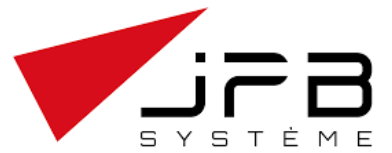Production of five million flight parts – a milestone achieved by JPB Système
Aeronautical locking mechanism manufacturer JPB Système has announced that it has produced five million independent flight parts since its inception over two decades ago.
The milestone primarily consists of component parts employed to manufacture JPB Système’s advanced LULYLOK B-nut self-locking device and borescope self-locking plug, which are both delivered to aircraft engine manufacturers worldwide like Safran, Rolls Royce, GE, and Pratt & Whitney. Other smaller components, fixtures, and fasteners manufactured throughout the company’s Industry 4.0-enabled production facilities are also included in the figure.
“Some of our industry-renowned lock-wireless devices are now into their third decade of deployment among leading aircraft engine companies, underscoring their uniqueness and longevity in addressing a simple yet vital role,” said Damien Marc, CEO, of JPB Système. “Reaching this impressive landmark figure underscores their continued importance as a robust, high-quality, and easy-to-use solution to increasing an aircraft engine’s cost-effectiveness and safety.”

How did LULYLOK assist the company in achieving this milestone?
JPB Système’s LULYLOK solution, a sophisticated B-nut for fittings, boasts an exclusive self-locking device to guarantee the securing of pipes and tubes, avoiding loosening and leaking due to severe vibration and high-temperature conditions.
Importantly, LULYLOK eliminates the necessity of a lock wire or safety cable, tab washers, cotter pins, or another technique of fastening to safeguard the threaded components inside an aircraft’s engine. This reduces maintenance costs and eliminates foreign object damage.
Similarly, the easy-to-use self-locking borescope plug, which, like LULYLOK, is made up of four independent parts, eliminates the requirement for lock wires while retaining an engine’s connections before the visual inspection. Developed in the 1990s for Pratt & Whitney, the device minimizes human error and associated risks while increasing efficiencies by cutting maintenance time from one hour to just 10 seconds.
JPB Système claims its self-locking devices are used by a number of the world’s biggest aerospace manufacturers over a diverse variety of aircraft engine categories, as they have been for many years. The CFM56 from GE/Safran joint development CFM International is the “best-selling” engine in commercial aviation history and the conventional engine across the Airbus A320 and Boeing 737 families, along with CFM’s LEAP-1A, 1B, and 1C engines, Pratt & Whitney’s GTF, and Rolls Royce’s Trent 1000 for the Boeing 787 Dreamliner.

Large-scale aerospace production
Previously, industrial metal 3D printer manufacturer AddUp and Dassault Aviation, a French aerospace company, announced a collaboration to move metal additive manufacturing processes from “prototyping” to “mass production” in the aerospace industry. Both companies believe that the aeronautics industry must address a range of issues in order to maintain and improve its competitive edge. These include increased global air traffic, part lightening, improvement, reliability, higher quality, compliance with ever-stricter regulations. The solution to these problems is to use metal 3D printing under industrial production conditions. In this context, Dassault Aviation established the cooperative R&D project “AEROPRINT” with the assistance of a significant group of collaborators, research centers, academic institutions, and businesses, including AddUp.
Ai Build, a robotic 3D printing company and London-based Artificial Intelligence (AI), raised $1 million to accelerate the commercialization of its AiSync software. The financing round was directed by venture capital firm SuperSeed which included entrepreneur William Tunstall-Pedoe, one of the creators of Amazon’s Alexa voice command. Ai Build wanted to use the funding to bring its automated AI technology to more international-level aerospace and automotive manufacturers, thus accelerating large-scale 3D printer production in these sectors.
What is the? Future of 3D printing What will the next ten-years hold?
What engineering challenges What challenges will be faced in the future by the additive manufacturing industry?
To stay up to date with the latest 3D printing news, don’t forget to subscribe to the 3D Printing Industry Newsletter Follow us on TwitterLike our page or send us an email Facebook.
While you’re here, why not subscribe to our Youtube channel? Featuring discussion, debriefs, video shorts, and webinar replays.
Are you looking to find a job in additive manufacturing? Visit 3D Printing Jobs Here are some examples of the roles available in the industry.
Feature image shows the JPB Système company logo. Image via JPB Système.